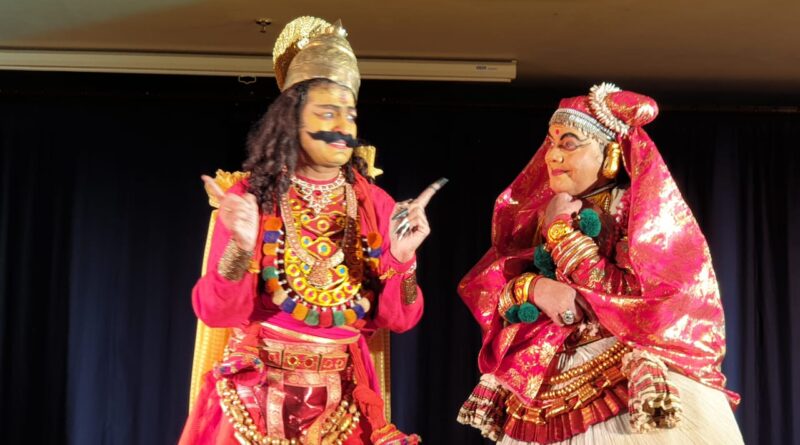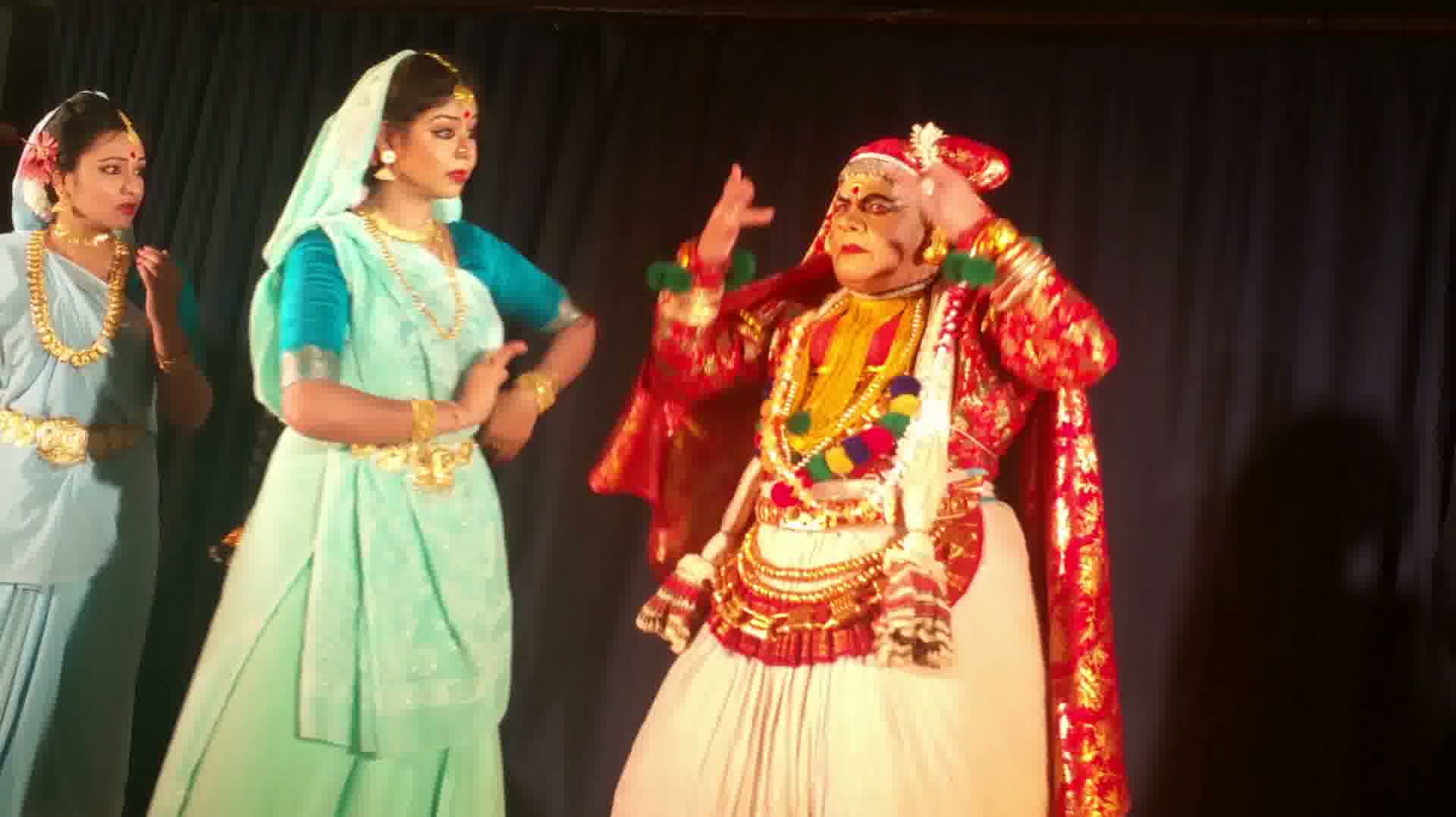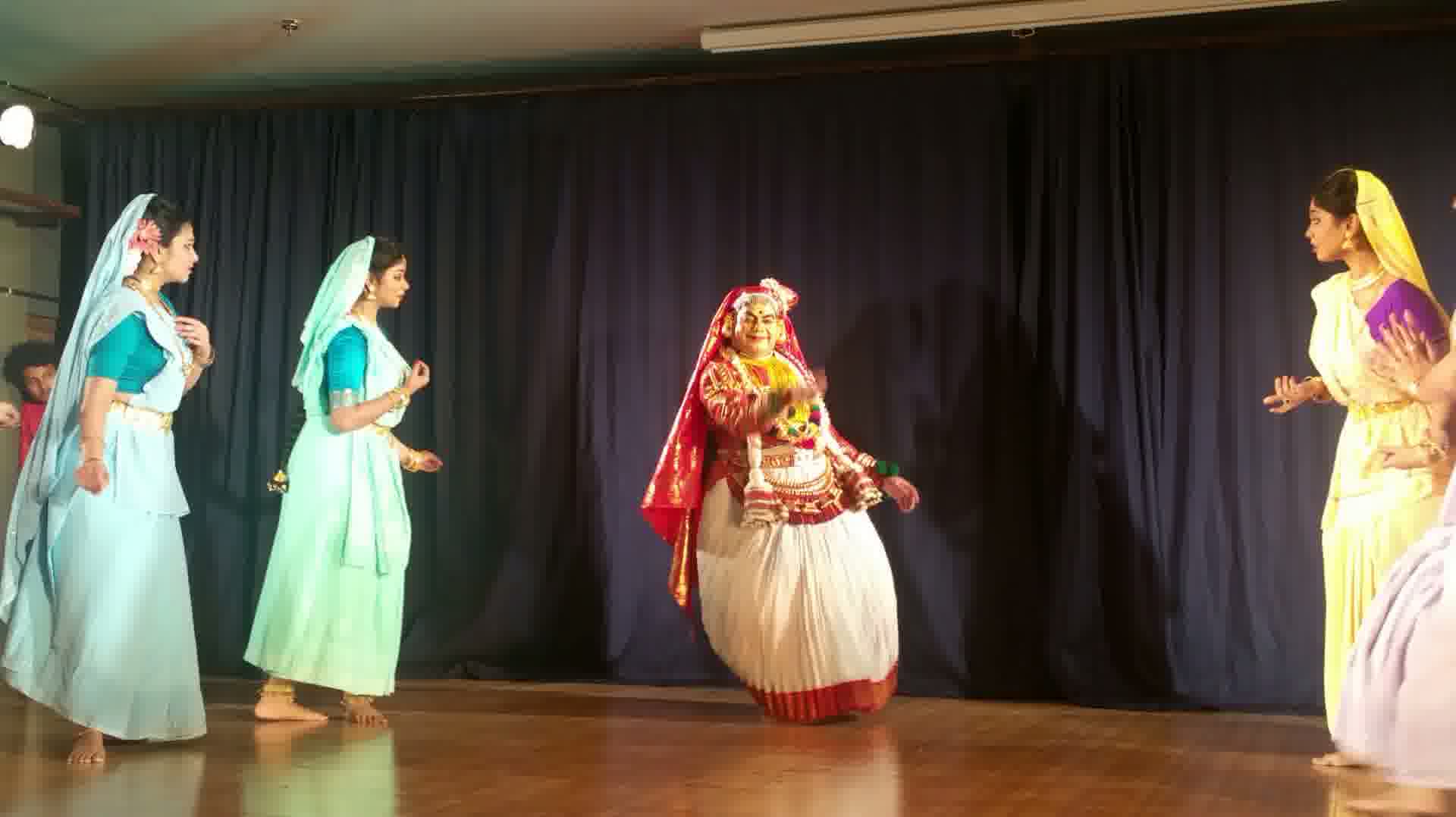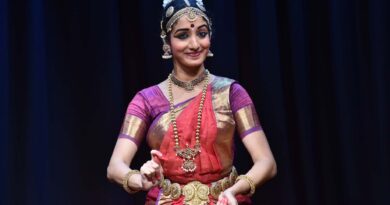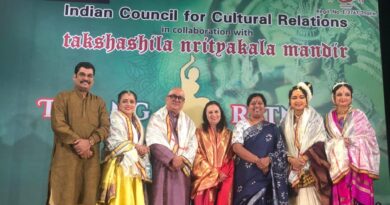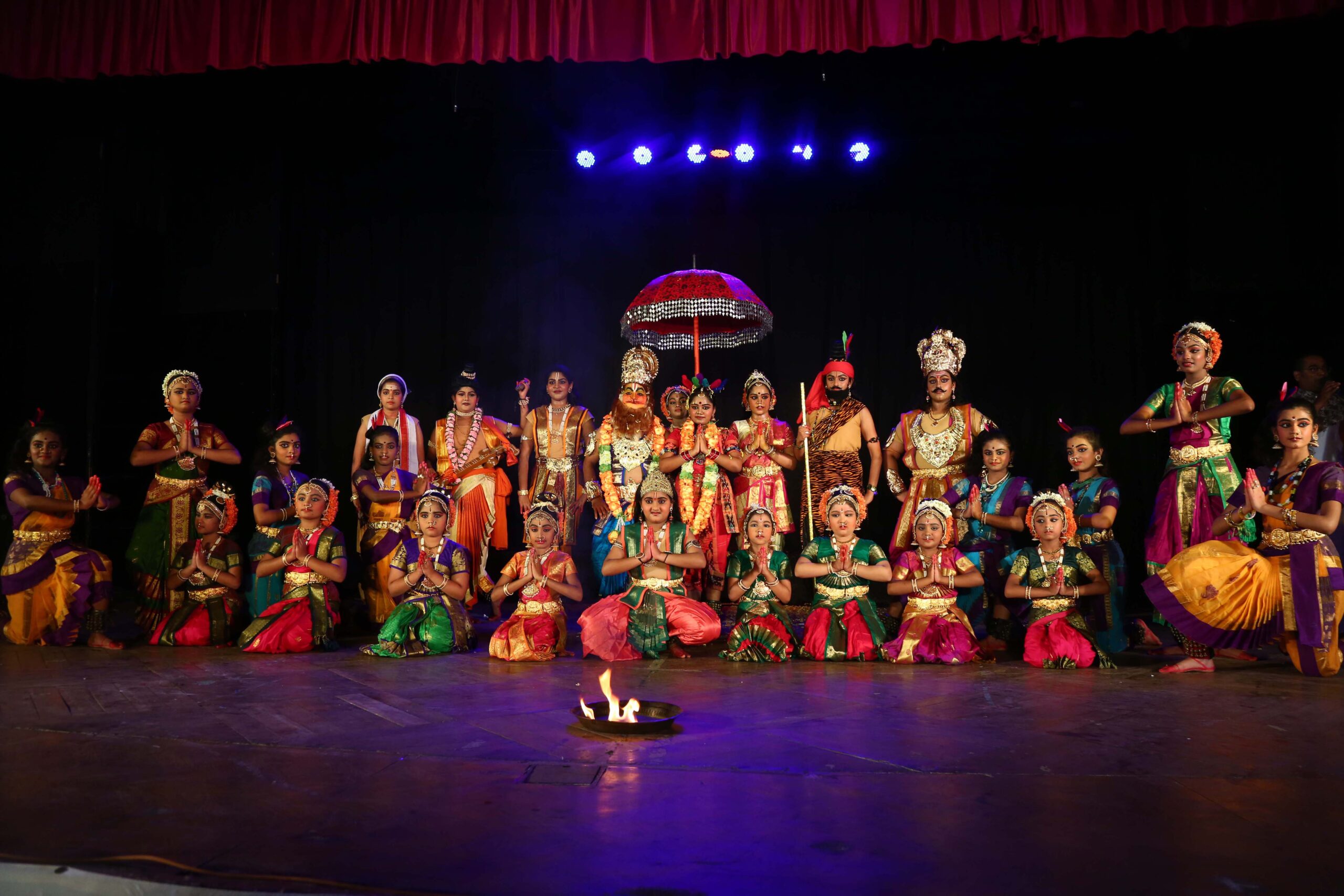The 92nd Birth Anniversary of Guru Govindan Kutty in Kolkata
Text: Dr. Nita Vidyarthi, Cultural Critic, Kolkata Pics: Kalamandalam, Kolkata
To commemorate the 92nd Birth Anniversary of the Kathakali Doyen Guru Govindan Kutty, Kalamandalam Calcutta presented an offering of three novel presentations, on November 13, 2019, conceived by Guru Dr Thankamani Kutty, at the Guru Govindan Kutty Auditorium, at their very own Kalamandalam Performing Arts And Research Centre, Kolkata. Embracing principally Bharatanatyam and Kathakali styles, famous artists from Kerala Kalamandalam and Kalamandalam Kolkata presented two dramatically choreographic versions, “Kamsa Swapanam” and “Swayambhu Manu”, concluding with a short perceptive piece “Atmagyanam”.
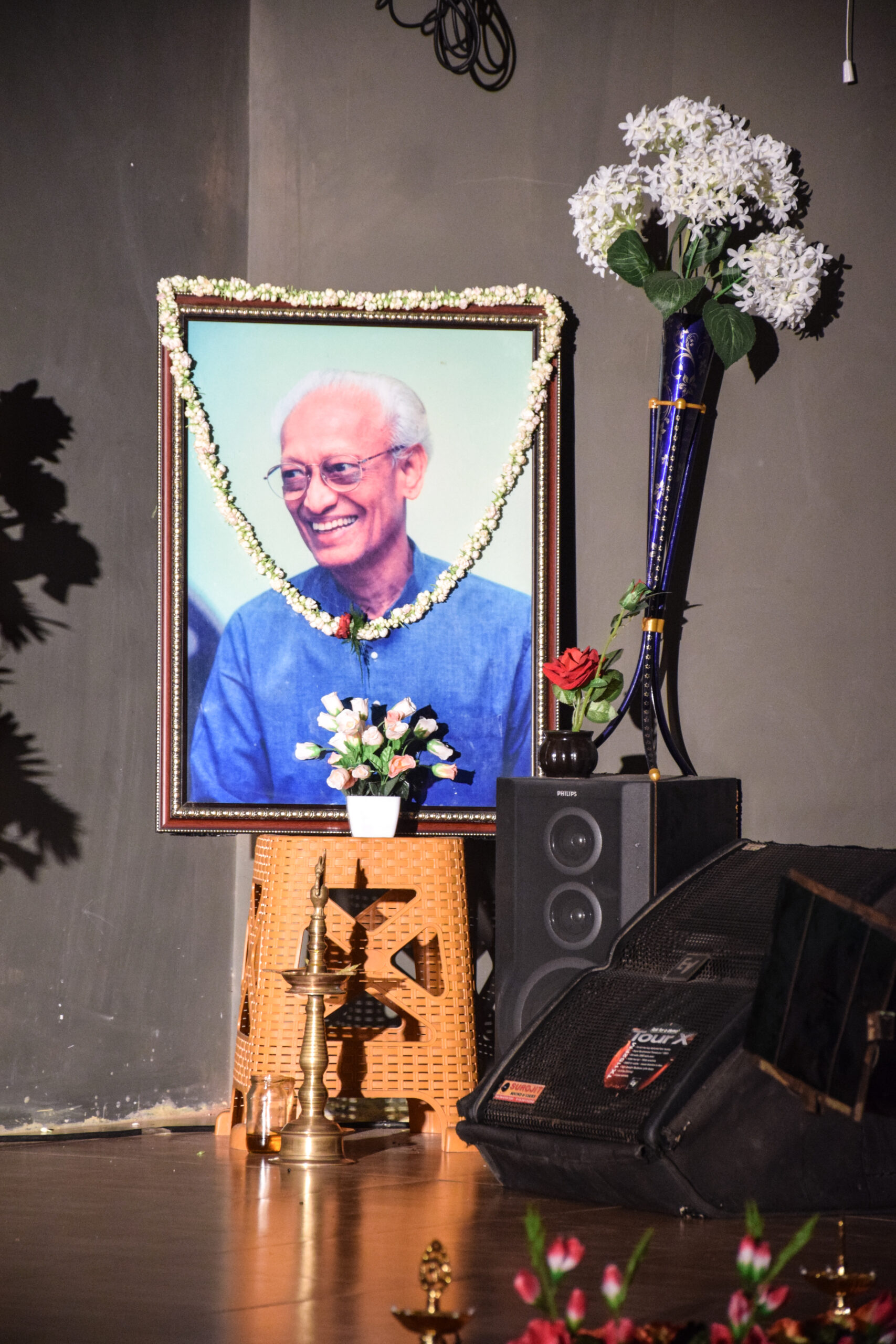
An austere inauguration of the offering of flowers on the portrait of Guru Govindan Kutty placed on the right corner of the stage by the family members of Guruji and the invocatory hymn of Sukumar G Kutty ushered in the evening. The customary thiraseela (colourful curtain) held by two men appeared on the stage and the dance theatre “Kamsa Sapanam” began. The orchestra comprising the chendda and edakka by the renowned Kalamandalam Gopa Kumar, maddalam by Kalamandalam Rajan and mridangam by Shankar Narayanaswamy set the mood. The thiraseela was removed and Kalamandalam in a modified traditional costume, complete with the “Damshtram”(white elongated artificial canine teeth) as Kamsa, The King of Mathura, immersed in deep anxiety and fear wakes up from his dream. T Sanakaranarayan as Poothana in traditional Kathakali streevesham with white “Putava” (frilled sari) “Kurunira” (silver ornament above the forehead) and “Kontakkettu”(head covered with the veil) walks through the aisle of the auditorium on to the stage to attend to the call of the King. And the story unfolds.
Kamsa Sapanam, choreographed by Guru Thankamani Kutty and the acclaimed Kathakali maestro Kalamandalam Professor T. Shankaranarayan, was based on the popular story of the dream of Kamsa, the tyrant King of Mathura and the consequences of the prophecy (Divya Vani) that he would be killed by the 8th son of his sister Devaki and Vasudeva, the birth of Krishna, commissioning the fearful demoness Poothana to go to Nandalaya at Gokulam in disguise and kill all newborns and finally the Moksha or salvation of Poothana by the Lord.
A virtuoso of very high calibre, 84-year-old Shankaranarayan looked beautiful as the demoness in disguise of a pretty woman. The body inflexions, gait and above all the mesmerising use of the upangas, the sanchari bhavas and the twitching of the facial muscles on transformation as the demoness, the agility and exotic portrayals of the beautiful Nandagao created a perfectly enacted fantasy world and visual imagery transporting the audience to the days of Gokulam. The dancer has an intimacy with the form that reflects contrasting emotions with elan. The portrayal of the cascading falls and the ripples of the river with the hand movements and hasta-mudras, the dilemma of poisoning baby Krishna and final action get the reverent treatment it so thoroughly merits. The surprise factor for his scintillating execution is his “beautiful face”!
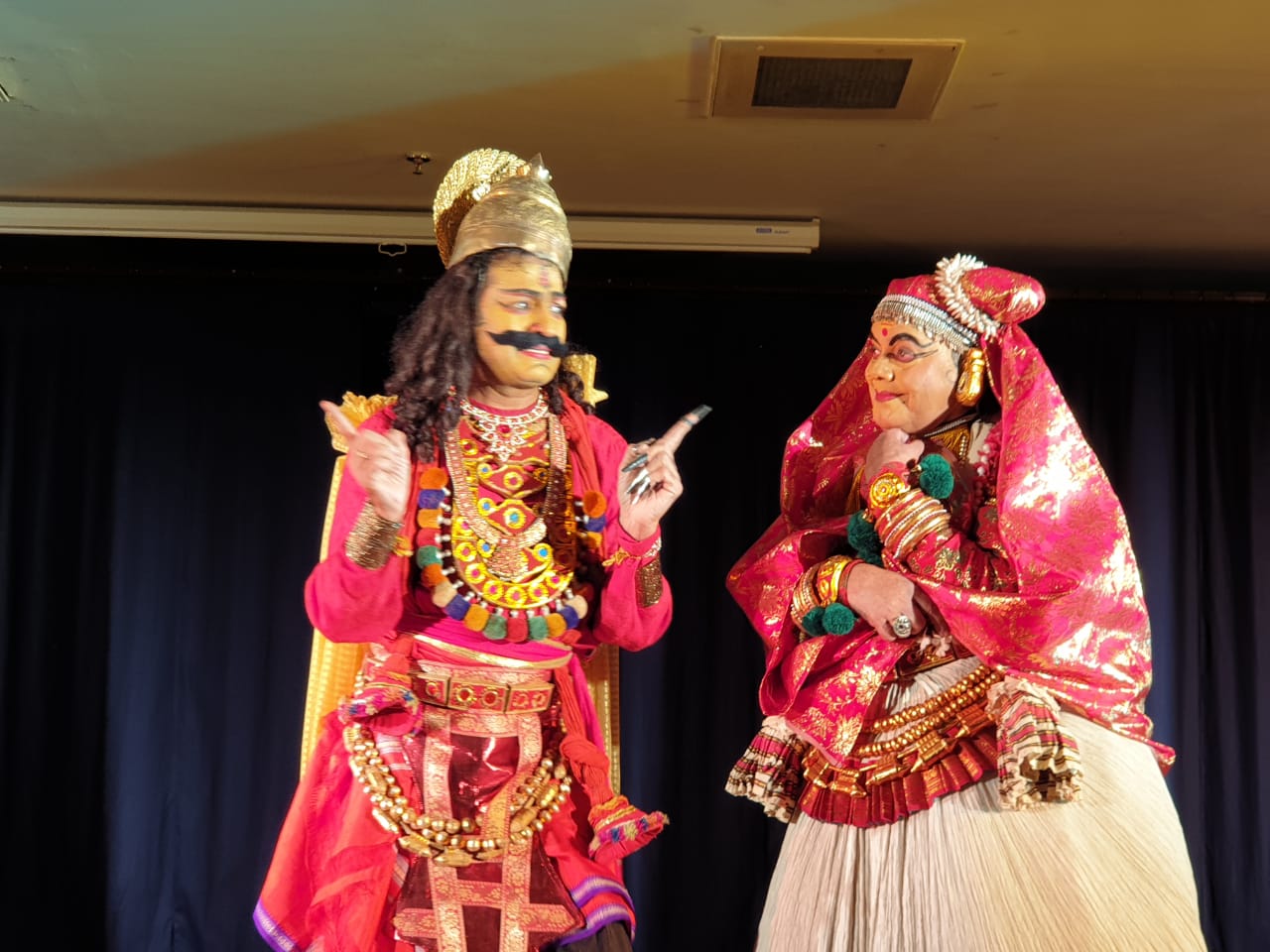
The choreography by Guru Thankamani Kutty and T Sankaranarayan took care of the details, making the episode visually gripping. Kalalinayam Mukundan as Kamsa was his vigorous self, well suited to emanate Roudra and Veer rasa. The musicians gave able support making the episode entertaining. The dancers of Kalamandalam Kolkata entertained as the village women with their vibrant dancing. It was an overall enjoyable production!
The second production “Swayambhu Manu” choreographed by Guru Thankamani Kutty was based on the 11th part of Vishnu Puran and highlighted on the story of Dhruva, the son of Uttanapada and his wife Suniti and grandson of Manu, his severe austerity, devotion to Lord Vishnu/Lord Narayana, his penance or tapasya in the forest and sparking of the “Dhruva-stuti”. Impressed by his perseverance and steadiness of purpose Vishnu decreed that the lad would attain “Dhruvapada”-the state in which he would become a celestial body which would not be touched by “Maha-Pralaya”.
The drama opened in the King’s chamber where his favourite wife Suruchi (Kalamandalam Swarnadeepa) was playing the Veena and her son Uttam was playing on the lap of King Uttanapada (Kalamandalam Suchindranathan). Dhruba son of the King’s first wife Suniti (Girija) who was garlanding the flowers also wanted to sit on Uttanapada’s wife but Suruchi berated him saying that only God can allow him that privilege. So went Dhruva in search of Lord Vishnu in the forest and prayed. The production was mediocre but the tale is not usually staged.

The concluding ‘Atmagyanam’ was about self-realisation expressed through a class-room situation of learning dance. It began with the chanting of Guru Vandana and students followed the teacher’s instructions and tried to gain the essence of the experience and work for its manifestation through sadhana-practice and self-knowledge. The artistes of Kalamandalam Kolkata participated in this piece. The programme closed with the Mangalam by Sukumar Kutty.


